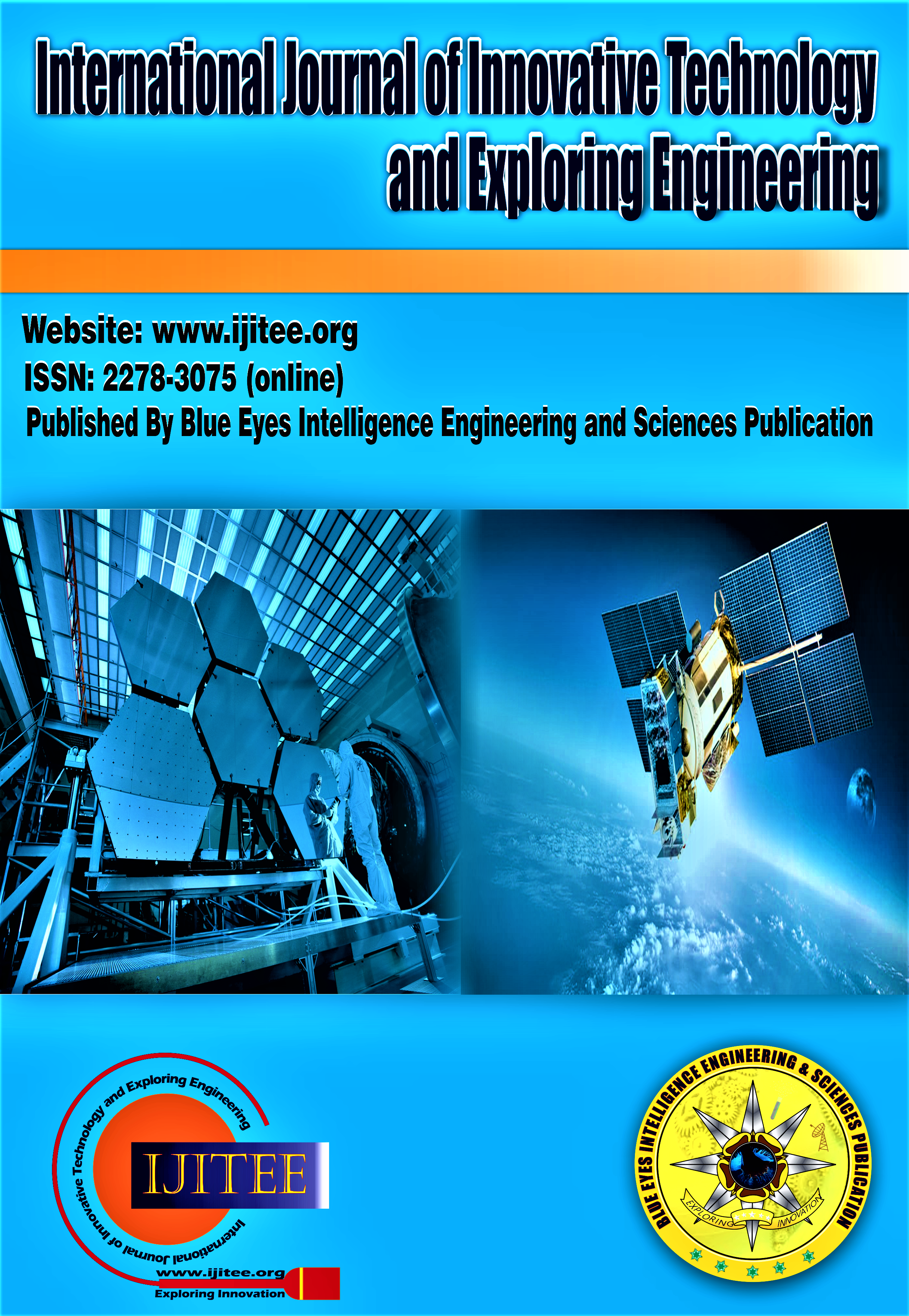Rainfall-Runoff Process of Pallikaranai Marshland Under the Influence of Perungudi Landfill Site using HEC–HMS
Main Article Content
Abstract
The Wetland River basins are one of the critical urban watershed areas due to complex urban activities. The rainfall-runoff process in urban catchment areas is influenced by solid waste dumping, leachate generation from dumping sites, aquatic weeds, sewage generated by municipalities and town panchayats, effluents generated by industries, sand mining along the river bed and encroachment due to urban activities. Considering these complexities, this study aims to predict the stream flow in a river basin concerning a given amount of rainfall using HEC - HMS software models. The sub-basin elements are used to convert rainfall to runoff. A meteorologic model is used to assign the boundary conditions for sub-basins, which include precipitation, short/long wave radiation, and potential evapotranspiration. A time series of flow data is used as input of a model to estimate the average basin rainfall. Calibrate the model and it's required for optimization to be carried out using observed discharge. As a result, considering the three sub-basins and two reach sites, the increase in drainage area is directly proportionate to excess volume, direct run-off volume, and discharge volume, and the reliability of the model is achieved using observed data and predicted data.
Downloads
Article Details
Section

This work is licensed under a Creative Commons Attribution-NonCommercial-NoDerivatives 4.0 International License.
How to Cite
References
Mrugaxi Sheth. "Review: Rainfall Runoff Modelling". www.ijert.org, 2018.
Salah Ud Din, Noor Muhammad Khan, Muhammad Israr, Hazrat Nabi, and Mansoorulla Khan. "Runoff Modelling Using HEC HMS For Rural Watershed. International Journal of Advance Engineering and Research Development, Vol.6(12), 2019, pp:630–636.
C.P.Shankar , M.Shanmugam, C.Pradeep, and D.Thirumalaivasan, "Flood modeling for a part of the Adyar river basin using HEC-HMS and HEC-RAS for the December 2015 floods". Ecology, Environment and Conservation, Vol.24, February2018, pp:S260–S263.
A.N.A.Hamdan, S.Alumuktar, and M.Scholz, "Rainfall-Runoff Modeling Using the HEC-HMS Model for the Al-Adhaim River Catchment, Northern Iraq", Hydrology,.Vol.8, 2021,PP;58. https://doi.org/10.3390/hydrology8020058.
L.A.Jabbar, I.A.Khalil, and L.M.Sidek, "HEC-HMS Hydrological Modelling for Runoff Estimation in Cameron Highlands, Malaysia". International Journal of Civil Engineering and Technology (Ijciet) 12(9), 2021, PP: 40–51. https://doi.org/10.34218/ijciet.12.9.2021.004
US Army Corps of Engineers. "Hydrologic Modeling SystemHEC-HMS Technical Reference Manual". Hydrologic Engineering Center.2000.
S.Natarajan, and N.Radhakrishnan, "Simulation of rainfall–runoff process for an ungauged catchment using an event-based hydrologic model: A case study of Koraiyar basin in Tiruchirappalli city, India". Journal of Earth System Science, Vol.130(1), 2021. https://doi.org/10.1007/s12040-020-01532-8
M. Baláž, M.Danáčová, and J.Szolgay, "On the use of the Muskingum method for the simulation of flood wave movements". Slovak Journal of Civil Engineering, Vol.18(3), 2011, pp: 14–20. https://doi.org/10.2478/v10189-010-0012-6
A.Majidi, and K.Shahedi, "Simulation of Rainfall-Runoff Process Using Green-Ampt Method and HEC-HMS Model (Case Study: Abnama Watershed, Iran)". International Journal of Hydraulic …, Vol.1(1), 2012, pp:5–9. https://doi.org/10.5923/j.ijhe.20120101.02
I.D.Skhakhfa, and L.Ouerdachi, Hydrological modeling of wadi Ressoul watershed,Algeria, by HEC-HMS model". Journal of Water and Land Development, Vol.31(1), 2016, pp: 139–147. https://doi.org/10.1515/jwld-2016-0045.
S.V. Kolekar,, and K.J.Muthappa ,Gowtham Prasad M E.,Shruthi H G., Shivaprasad H.,& Ram, N S. "Applicability of HEC-HMS Tool To Western Ghats - Nethravathi River Basin". Journal of Advanced Research in Engineering & Management (IJAREM), Issn:2456-2033//Vol.03(04), 2017, pp:70-79.
N.S. Romali, Z.Yusop, and A.Z.Ismail, "Hydrological Modelling using HEC-HMS for Flood Risk Assessment of Segamat Town, Malaysia". IOP Conference Series: Materials Science and Engineering Vol.318(1), 2018. https://doi.org/10.1088/1757-899X/318/1/012029
M.P.Shaikh, V.G. Yadav , and S.M.Yadav, "Simulation of Rainfall-Runoff Event Using Hec-Hms Model for Rel Sub-Basin, Gujarat, India". Journal of Emerging Technologies and Innovative Research, 5(4), 2018, pp:402–407.
14. A.Sarminingsih , A. Rezagama, and Ridwan. "Simulation of rainfall-runoff process using HEC-HMS model for Garang Watershed, Semarang", Indonesia. Journal of Physics: Conference Series, 1217(1), 2019. https://doi.org/10.1088/1742-6596/1217/1/012134
R.Visweshwaran, "Application of the HEC-HMS model for runoff simulation in the Krishna basin " 2017.. July. https://doi.org/10.13140/RG.2.2.13326.05448
Singh, R., & Ajmera, S. (2020). Rainfall Runoff Modeling using Gene Expression Programming and Artificial Neural Network. In International Journal of Engineering and Advanced Technology (Vol. 9, Issue 3, pp. 978–983). https://doi.org/10.35940/ijeat.b4264.029320
Romlay, M. R. M., Rashid, M. M., Toha, S. F., & Ibrahim, A. M. (2019). Rainfall-Runoff Model Based on ANN with LM, BR and PSO as Learning Algorithms. In International Journal of Recent Technology and Engineering (IJRTE) (Vol. 8, Issue 3, pp. 971–979). https://doi.org/10.35940/ijrte.c4115.098319
Elhassnaoui, I., Moumen, Z., Bouziane, A., Ouazar, D., & Hasnaoui, M. D. (2019). Generation of Synthetic Design Storm Hyetograph and Hydrologic Modeling under HEC HMS for Ziz Watershed. In International Journal of Innovative Technology and Exploring Engineering (Vol. 8, Issue 10, pp. 3308–3319). https://doi.org/10.35940/ijitee.j1214.0881019
B, A., & Nyamathi, Dr. S. J. (2023). Rainfall Trend Investigation of Hemavati Catchment, Karnataka, India. In Indian Journal of Environment Engineering (Vol. 3, Issue 2, pp. 8–15). https://doi.org/10.54105/ijee.a1847.113223
Sarsoha, Dr. R., & Rani, S. (2023). A Case Study of Groundwater Potential for Agricultural Sustainability in Ambala District, Haryana by using Geospatial Approach. In Indian Journal of Energy and Energy Resources (Vol. 3, Issue 1, pp. 1–4). https://doi.org/10.54105/ijeer.a1028.113123





